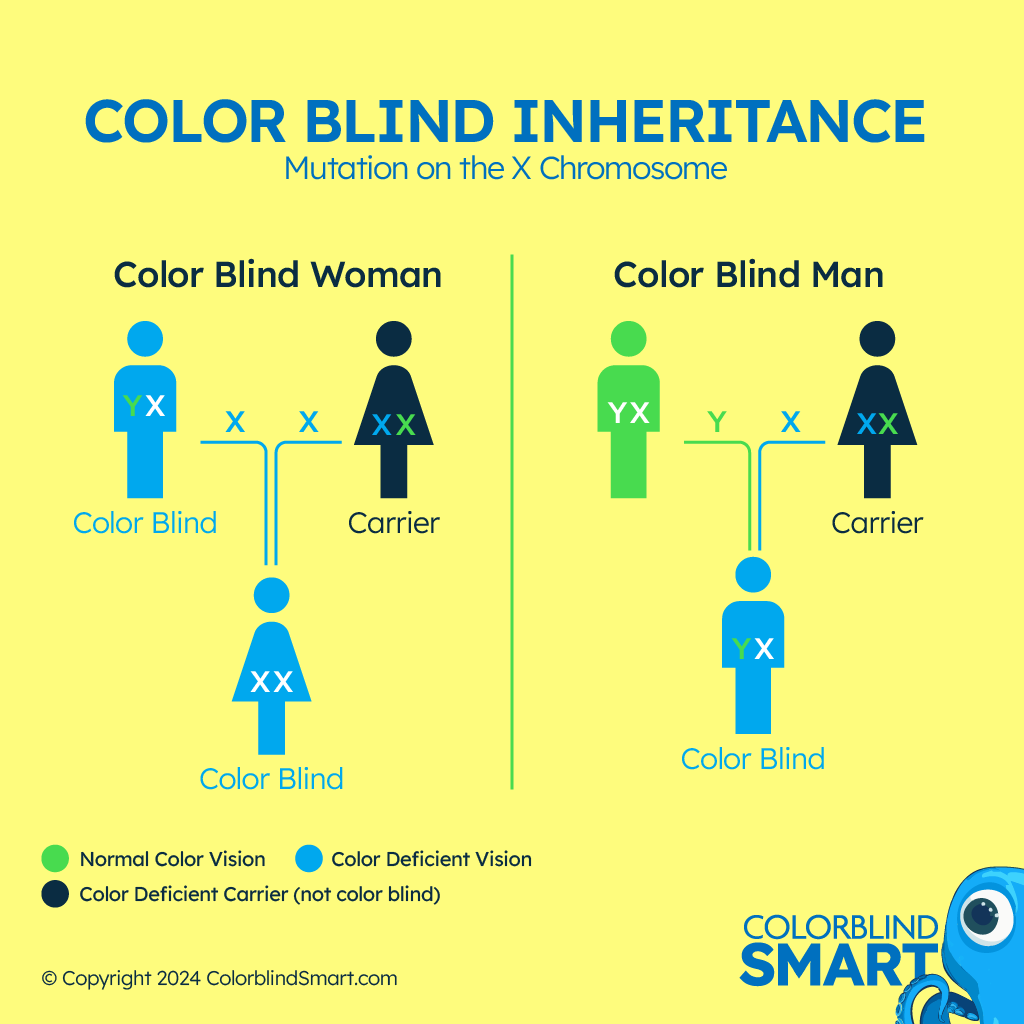Why are men more likely to be color blind?
Explore the science behind why color blindness is more common in men than women, including genetics, statistics, and inheritance patterns.

Why are men more likely to be color blind?
Color blindness—or color vision deficiency—is significantly more common in men than in women. The reason for this disparity comes down to genetics, specifically the way color vision traits are inherited through sex chromosomes.
There were two boys and one girl in my family, all siblings of the same biological parents. My sister has normal vision, but my brother and I are both color blind. Let’s learn how this happens.
Understanding the Genetic Basis
The most common forms of color blindness—red-green deficiencies like deuteranopia and protanopia—are caused by mutations in genes located on the X chromosome. Men have one X and one Y chromosome, while women have two X chromosomes. If a man inherits a defective color vision gene on his single X chromosome, he will be color blind. Women, however, must inherit the faulty gene on both of their X chromosomes to be affected.
Because it’s much more likely for a woman to have one functional X chromosome compensating for the defective one, she may be a carrier without showing any symptoms. This X-linked recessive inheritance pattern explains why color blindness is far more prevalent in males than in females.
How Common is Color Blindness?
Color blindness is estimated to affect around 1 in 12 men and only 1 in 200 women globally. These figures may vary slightly depending on population and ethnic background. In some European populations, male color blindness rates can exceed 8%, while the prevalence in females typically remains below 0.5%.
The red-green type is by far the most common and is responsible for the majority of cases. Blue-yellow color blindness (tritanopia) and total color blindness (achromatopsia) are much rarer and are not usually linked to the X chromosome.
Why Are Males More Likely Than Females?
In simple terms, men are more likely to be color blind because they have only one X chromosome. With only one copy of the gene, any mutation is expressed. Women would need two defective copies, which is statistically far less likely. This X-linked recessive inheritance makes male vulnerability to red-green deficiencies nearly 16 times higher than that of females.
Here’s how inheritance can work:
- If a woman carries the gene but is not color blind herself, she has a 50% chance of passing it to her sons.
- If a man is color blind and has children, none of his sons will inherit the condition from him (since sons receive their father’s Y chromosome), but all of his daughters will be carriers.
This pattern explains why the condition can sometimes appear to skip a generation. In my family’s case it skipped a couple generations before being expressed in my brother and me. My sister’s son is also color blind.
Color Blindness: Women vs Men
The comparison between color blindness in women and men also highlights how sex-linked traits manifest differently. In rare cases, a woman can be color blind if both of her parents contribute an affected X chromosome—one from a color blind father and one from a carrier mother. This double-X transmission is uncommon, which is why the condition is far less frequent in women.
Despite the lower likelihood, female carriers may still face subtle vision issues or pass the condition on to future generations. Genetic counseling can help families understand inheritance risks and patterns.
Final Thoughts
So, are men more likely to be color blind? Yes—overwhelmingly so. The biological explanation lies in X-linked recessive inheritance and the statistical improbability of women receiving two faulty X chromosomes. Understanding these facts can help reduce confusion, promote awareness, and support better design and accessibility practices for all.
Last updated: June 06 2025